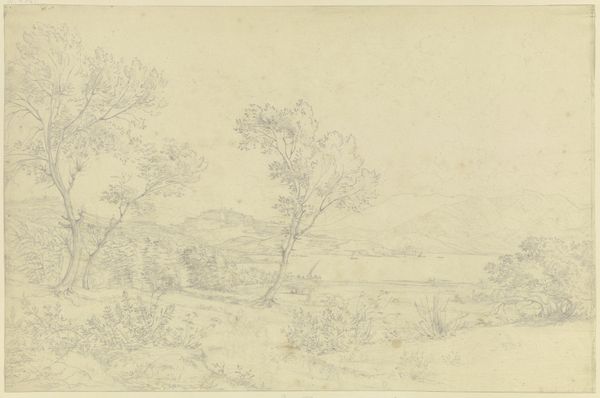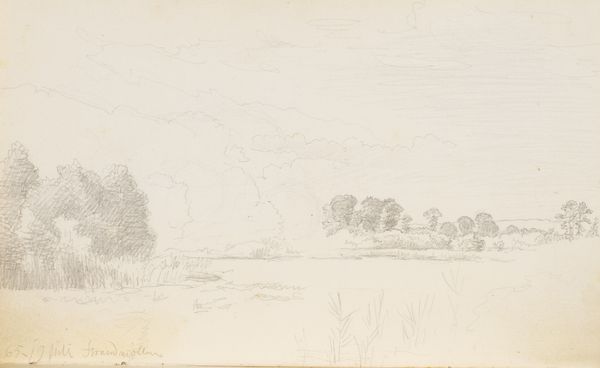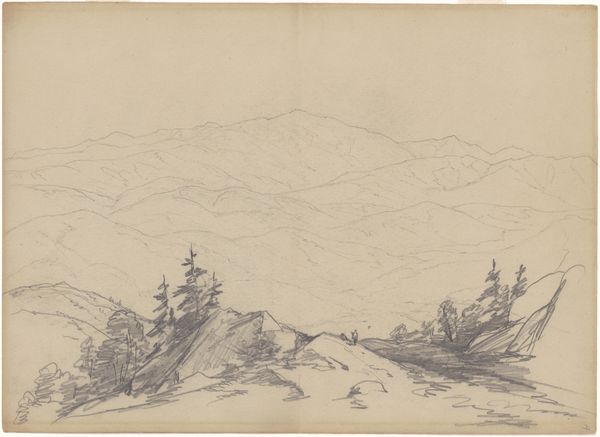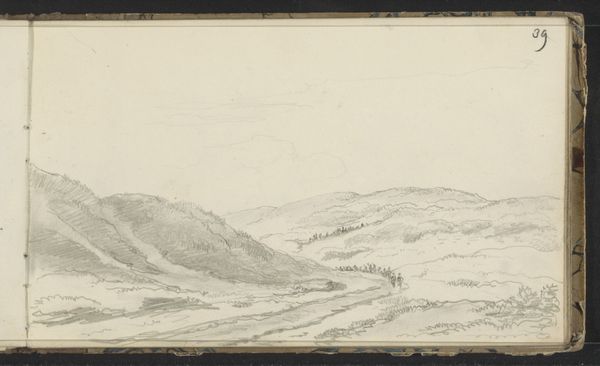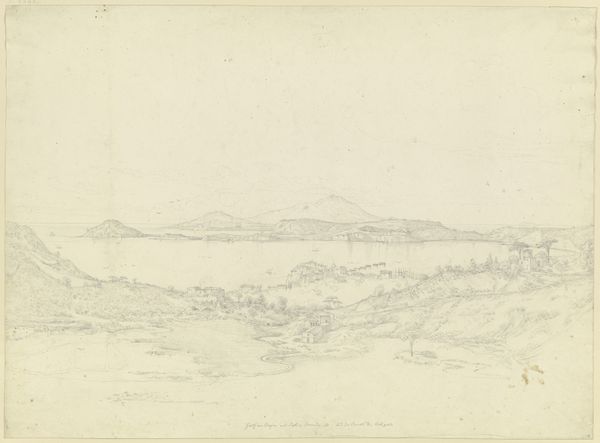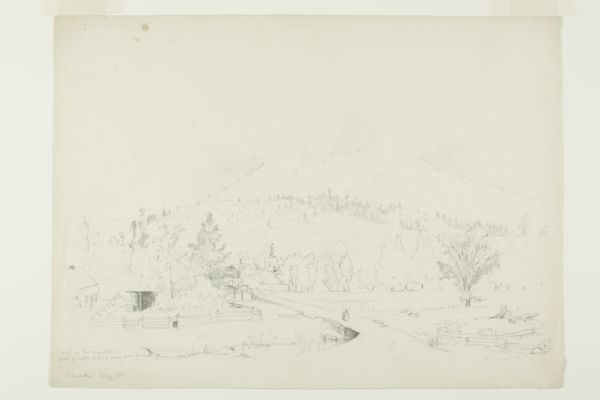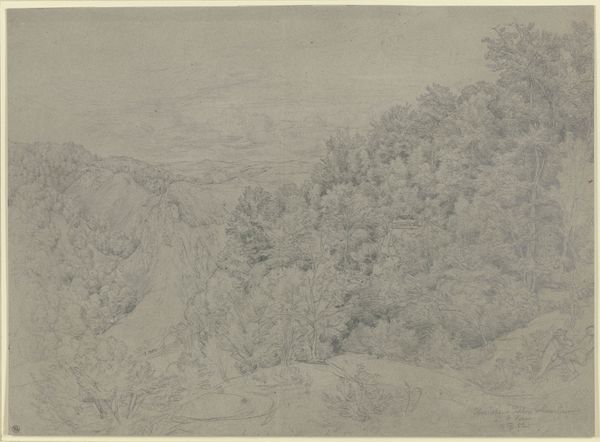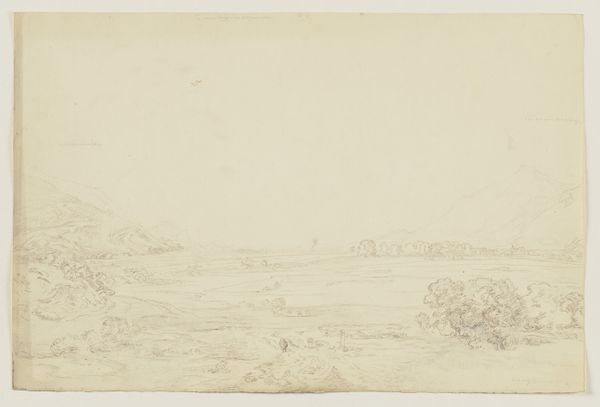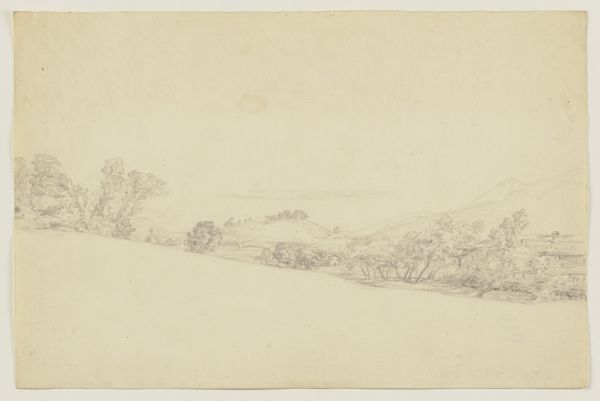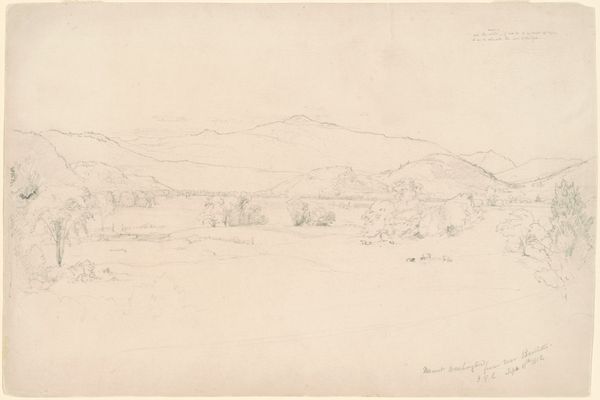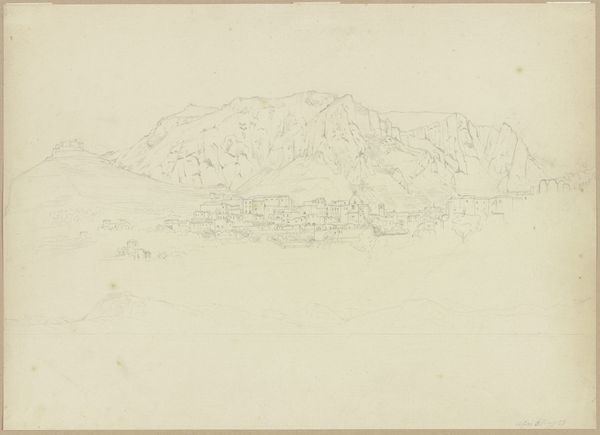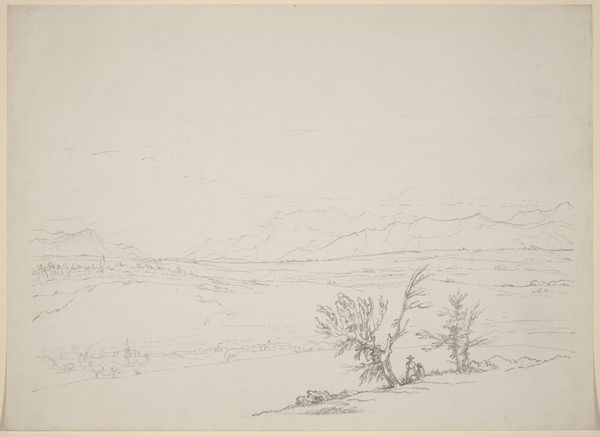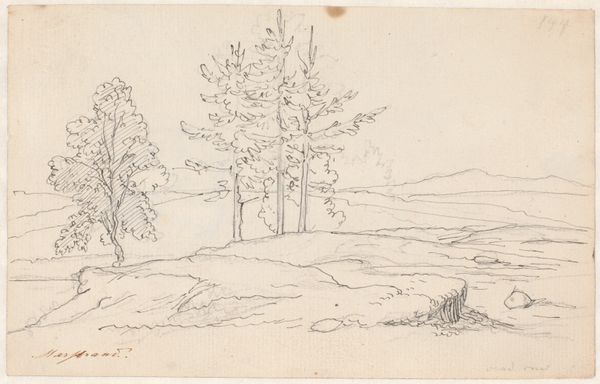
Copyright: Public Domain
Curator: Here we have Karl Haider's "Mountainscape," a work rendered in chalk and pencil in 1912. It's currently housed here at the Städel Museum. Editor: It strikes me as incomplete, almost a ghost of a landscape. The subtle lines and tonal gradations, or lack thereof, give it an ethereal quality. Curator: I see that. Consider how the artist constructs depth primarily through line. The mountains in the background, rendered with the barest suggestion, recede according to an almost academic perspectival scheme, contrasting with the relatively more defined, textural foreground. Editor: Yet, the chalk and pencil resist photographic naturalism. It's a mediated reality. I find myself thinking about Haider's tools: the graphite's source, the chalk’s mineral composition, and even the specific paper. Did the economic circumstances or material constraints of the time affect his artistic choices, particularly the seeming lack of bold strokes? Curator: That’s a pertinent question. One can read the somewhat understated realism not as a limitation, but as a stylistic choice. Think about how the softness of the medium allows him to suggest rather than delineate form, creating a tranquil, almost meditative space. Editor: But let’s also think of the environmental costs: chalk quarries, graphite mines… the materials themselves are inscribed with a human, and frankly, geological narrative that exceeds any mere stylistic interpretation. I'd be keen to know if this work came from a preparatory drawing made 'en plein air'. The circumstances of its making could also illuminate this lack of density in mark making. Curator: A vital layer of contextual interpretation. Still, the overall composition, the balance of open space and carefully etched details, and the interplay of light and shadow reveal an aesthetic consciousness profoundly aware of its own representational strategies. Editor: True enough. There’s a certain elegance to its simplicity. It serves as a stark reminder of the interconnectedness of artistic creation and the materials from which creation springs. Curator: Yes, and by analyzing the landscape’s construction through both material history and formal composition, we arrive at a richer, more nuanced appreciation.
Comments
No comments
Be the first to comment and join the conversation on the ultimate creative platform.
